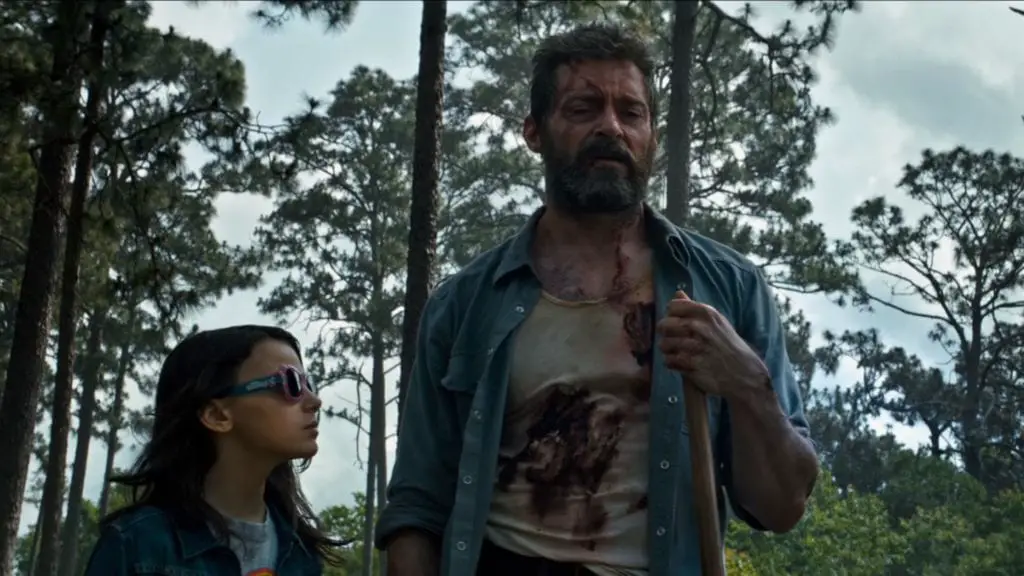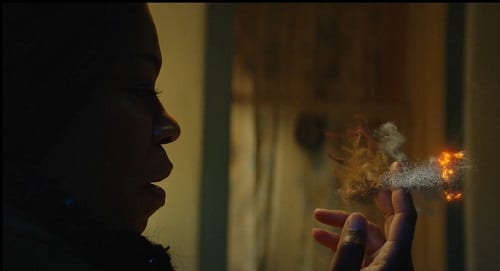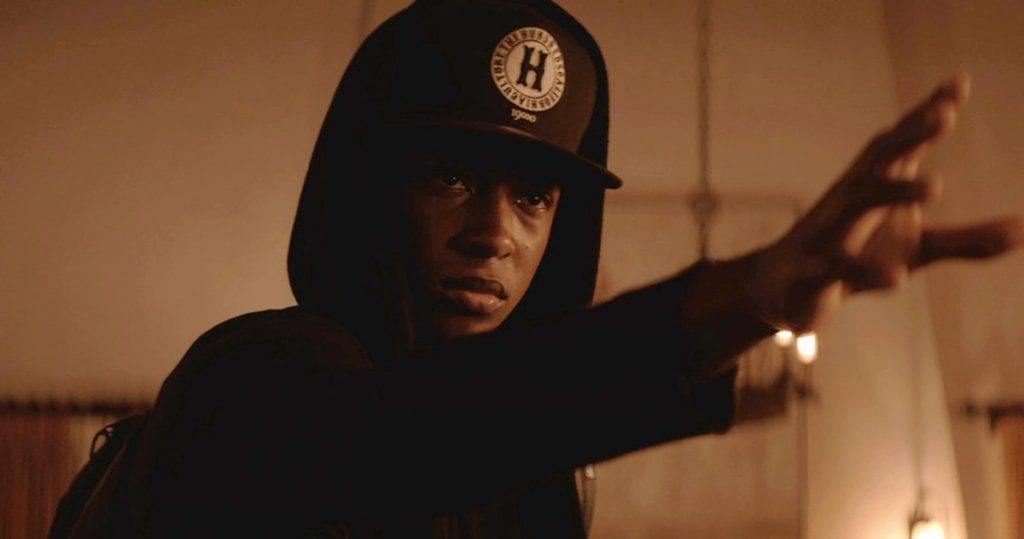Comic book movies are not new, no matter what certain studios might try to tell you. Superhero movies aren’t either. Their ubiquitousness in popular consciousness and film discourse is the only thing unique about them. But what is new is that we are, after years of being promised, these movies have endless possibilities, finally seeing the fruits of this promise.
Movies like Joker or Logan attempted to “legitimize” a genre that remains essentially hard to define. Like noir or folk horror, superhero movies/comic book movies have a nebulous definition. However, unlike noir or folk horror, there is no broad aesthetic or core set of principles that unite the genre. Or, at least, none that I’m aware of.

But recently, we’ve begun to see a slate of films, both big-budget and small, that range from flirting with possibilities to expanding them. The Daniels’s Everything Everywhere All at Once could be a prime mover in shifting the genre into something beyond big-budget so-called spectacle. I say so-called because anyone who has ever seen a Bollywood film knows deep in their soul that nothing that Hollywood could produce could ever hope to compete. The limit of white imagination in white Hollywood is so great as to be legitimately depressing at times.

Before Everything Everywhere, we had Julia Hart’s emotionally resonant Fast Color. Heck, a few weeks before that, we had a reboot of Hellboy that, while it flopped with audiences and critics alike, showed at the very least they were willing to go to darker places than the genre was ready to go. Joker played with this notion but, in actuality, was a very tepid mainstream film that did very little of anything except aim to make a genre that was already a multi-billion dollar industry into a legitimate “art-form” by being as derivative and shallow as possible.
But Hart’s Fast Color and the Daniels’s Everything Everywhere are examples of what is possible once artists are set free of an “interconnected universe.” Unfortunately, the whole concept, thus far, has served more as a marketing ploy more akin to the old Pokemon commercial’s “Gotta catch them all” only tweaked slightly into “Gotta watch them all.”
Strangely, fans of the studio offerings rarely have this completist mindset regarding the indy offerings.
I would be remiss if I didn’t mention films such as J.D. Dillard’s Sleight, a delightful movie about a young boy who passes his powers off as sleight of hand in his street magic act. Or Ariel Schuman and Henry Joost’s Project Power, a flawed tale that uses the trappings of superpowers as a lens to look at class and power. Again, something some big-budget movies attempt, but far too many ignore or gloss over.

Yet, we come back to the issues of how to define this genre. The most obvious solution, of course, is to go with the simple caveat that it must be based on a comic book property. But then what do we do with the countless indy films that have taken their cues from these movies? The ones who have expanded or trafficked in the tropes? If we change it to stories about meta-humans or people with powers, does that exclude Joker and Everything Everywhere?
Part of the problem is that much of what audiences consider uniquely comic-book-esque has been part and parcel of the sci-fi and fantasy genres. As a result, I’ve been in a perplexed funk as audiences feel the need to have their hands held while the MCU prepares to embark into the multiverse. Yet, as a child, all I needed was a character to show up either bald, with or without a mustache, and possibly wearing an eyepatch to understand that I was in an alternate dimension.
Despite this, the idea of alternate dimensions, timelines, or multiverses is treated as something uniquely found in comic books. Comics often blend sci-fi and fantasy, which is why I’ve always been more than mildly disappointed at the fad of making them “more realistic.” Granted, this is nothing new; Sam Rami made Peter Parker’s webbing biological because it was more believable than asking audiences to accept that a teenager was able to create something that 3M could not.

Much of what makes Everything Everywhere so audacious is how it refuses to water anything down, even a little, for the audience’s sake. I suspect the reason audiences and critics alike were so unkind to Morbius was that it’s impossible to see what the Daniels did, to witness the verve and heart poured into their story, and walk away unchanged; thus, seeing a studio movie that felt more like a product than art made the viewing of Daniel Espinosa’s offering feel all the more shallow.
The same thing happened to me when I saw Fast Color shortly after Joe and Anthony Russo’s Avengers: Endgame. A movie so lauded at the time I felt like I had stumbled into the mouth of madness. Yet, sometimes independent film can act as a tonic, a stark reminder of what the mainstream is not offering us.
Comics themselves share much in common with early pulp novels like “Doc Savage” and The Shadow,” both of which have been adapted for the big screen. Doc Savage, dubbed the Man of Bronze and the Shadow, rumored to be billionaire playboy Lamont Cranston who knows what evil lies in the hearts of men, would go on to be reimagined as even larger than life than they already were. There has always been a tightrope act of blending reality with the fantastical in the genre. But again, this has always been the same with other genres.

Whatever the case may be as far as how we define the genre now or moving forward, it is arguable that it is entering its most fascinating phase. The big studios are slowly catching up with the smaller budget films. Marvel has, bit by bit, shed its bland visual style and left behind “studio as the auteur” even as a generation of filmgoers misinterpret and misunderstand the phrase “auteur.” Chloe Zhao’s Eternals is the nail in the coffin of that era, as she is the first filmmaker to successfully make a film in the new studio system that feels more hers than theirs.
Some may argue that James Gunn did this before Zhao. But if you look at Gunn’s work outside the MCU, you can see a stark contrast between his non-MCU work and his Guardians of the Galaxy movies. His sensibilities are still evident in his MCU work, but they are primarily subsumed by the studio’s corporatization of the medium.
The point is, the studio’s latest phase is taking big and little risks in ways they’ve always been capable of taking, only now feel comfortable in doing so. The DC movies that stumbled early on by chasing the dragon of the MCU franchise’s success found not being the MCU to be more of a boon than a hindrance.
Matt Reeves’s The Batman is a massive step forward, along with Cathy Yan’s Birds of Prey, both of which were not ashamed of having a visual style. The Batman feels more voyeuristic than almost any comic book or superhero movie has felt in a very long time. Likewise, Birds of Prey dared the genre to embrace its roots while also pushing it forward in terms of its imagery.
I find myself in the awkward position of being psyched for future movies of this genre, just as my fellow moviegoers seem to be noticeably cooling on their fandom. A good thing, as it allows cooler heads and clearer eyes to prevail. Still, it’s a shame they’re getting out just when the movies are getting interesting.
Images courtesy of Warner Bros., 20th Century Fox, Netflix, WWE Studios, BH Tilt, High Top Releasing, Lionsgate, and Codeblack Films
Have strong thoughts about this piece you need to share? Or maybe there’s something else on your mind you’re wanting to talk about with fellow Fandomentals? Head on over to our Community server to join in the conversation!

